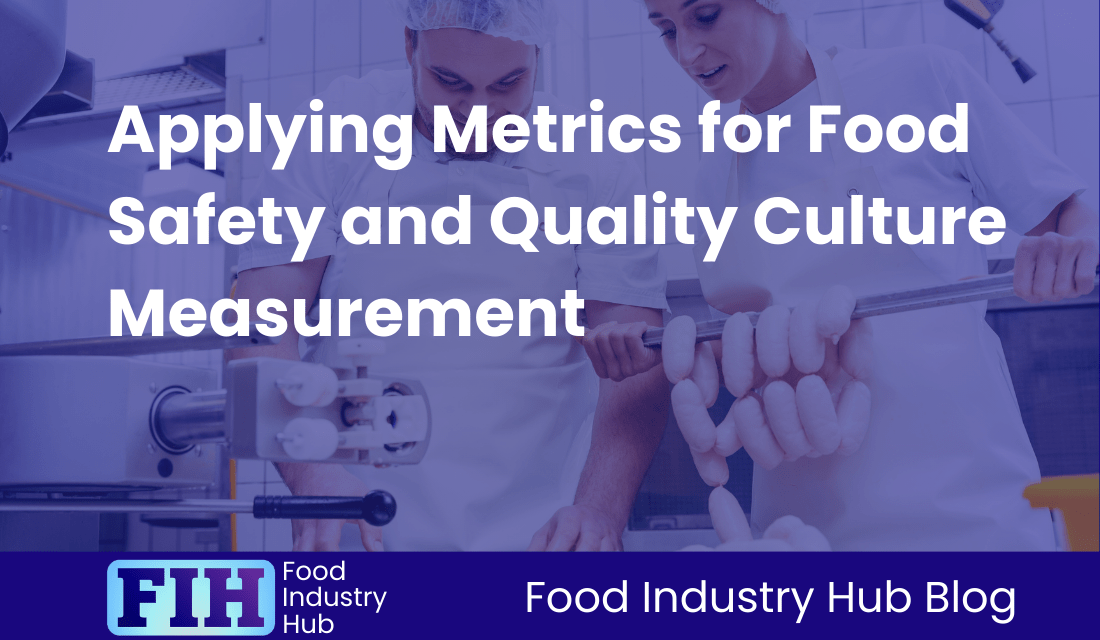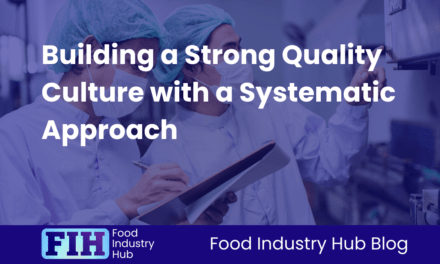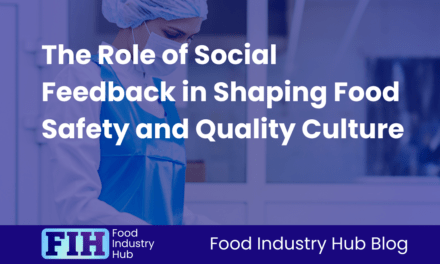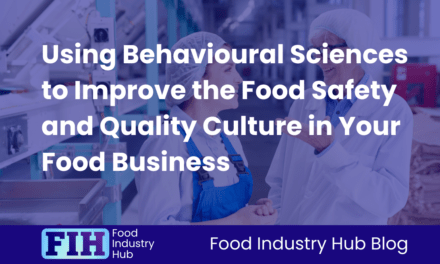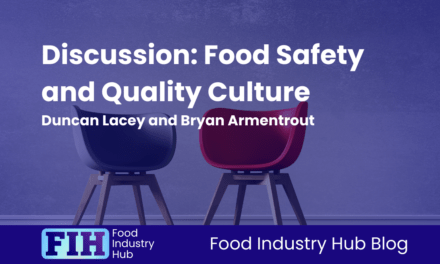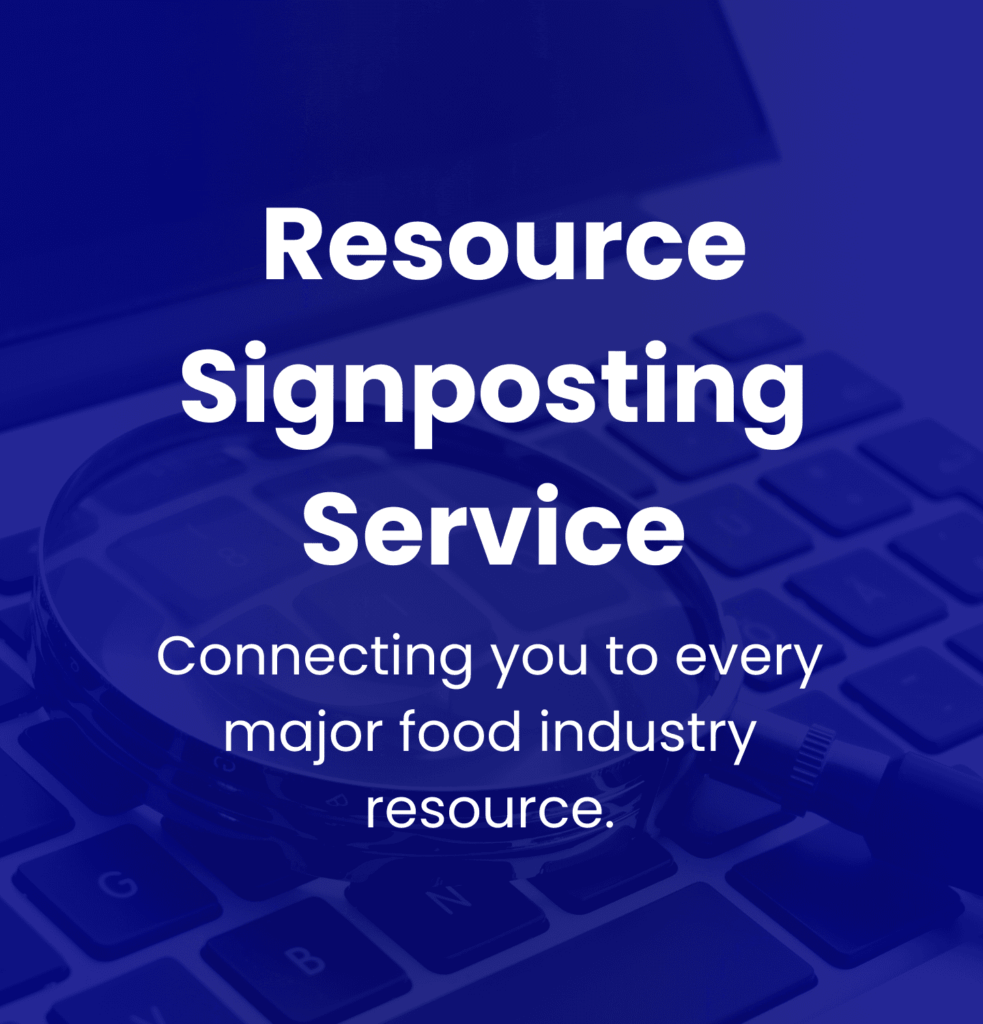Introduction
Compliance depends on objective evidence. Without objective evidence, it is impossible to demonstrate compliance or non-compliance at audit. The notion of compliance is only meaningful if it can be challenged and measured.
Today, various compliance standards require the development and improvement of the food safety and quality culture; requiring sites to measure objectively the effect of improvement initiatives on the food safety and quality culture. From a systems and compliance perspective, this one makes for an interesting kind of problem because you have to try to ascribe objective metrics to what seems like an inherently subjective topic.
This post is part of a collection we’ve put together to explore the topic of food safety and quality culture, and you can explore the topic in more detail by browsing the related content.
Table of Contents
Key Takeaways
- Elements of culture such as values, attitudes, and beliefs cannot be directly measured, but can be inferred from behaviours and actions.
- Survey responses are very useful indicators for food safety and quality culture maturity, but shouldn’t be relied upon in isolation.
- A robust assessment can be made as a combination of culture survey responses, employee interviews, observations of employee behaviours, the ratio of proactive to reactive fault reporting, the way quality assurance and compliance systems are engaged with, and evidence of senior management commitment through quantifiable metrics such as budget allocation.
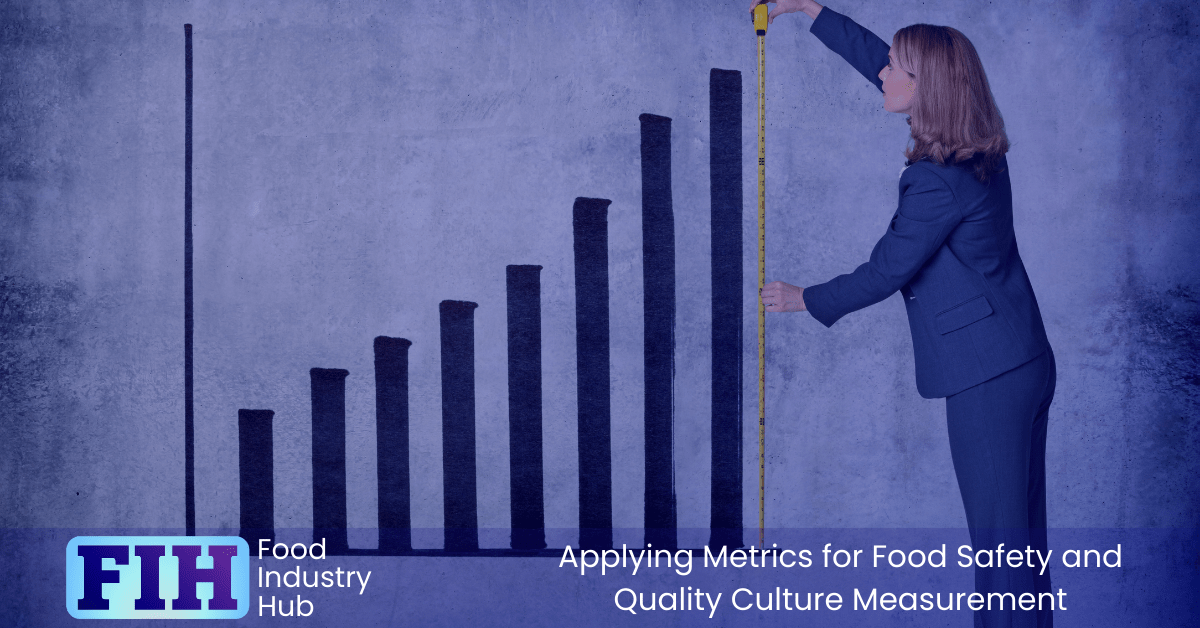
The difficulty in Evaluating Culture
Measuring food safety and quality culture involves evaluating not only the formal processes and procedures in place, but also the attitudes, behaviours, and beliefs of individuals within the organisation. This includes looking at how employees at all levels of the organisation perceive the importance of food safety and quality, how they demonstrate their commitment through their actions, and how they respond to challenges and opportunities for improvement.
Understanding and assessing the cultural factors that influence food safety and quality gives organisations an opportunity to identify areas for enhancement, implement targeted training and development programs, and foster a strong culture of continuous improvement.
One of the main challenges faced by food manufacturers in evaluating their food safety and quality culture is the subjective nature of culture assessment. Culture is intangible and can be difficult to measure using traditional metrics.
Cultural assessments can be influenced by factors like bias, perception, and organisational politics, making it hard to obtain an accurate and unbiased picture of the existing culture within the organisation. To overcome these challenges, food manufacturers can consider implementing a combination of quantitative and qualitative methods, such as surveys, interviews, and observations, to gain a balanced and comprehensive understanding of their food safety and quality culture.
While values and attitudes toward food safety and quality can be more challenging to measure compared to more concrete factors like knowledge or behaviour, they can still be assessed through various methods. Surveys, interviews, focus groups, and observations can be used to explore people’s perceptions, beliefs, and attitudes related to food safety and quality. These approaches can help you to understand how individuals value food safety and quality, as well as the factors that influence their attitudes and behaviours in relation to these topics. While measuring values and attitudes may be more complex than measuring behaviours or knowledge, it is still possible to gain insights into people’s perspectives on food safety and quality through observation and inference.

Measuring Culture
First, let’s define what’s being measured.
‘Culture’ = Shared values, beliefs, motivations, social influences, expectations, rationales, standards, and ethics held by a group.
Culture cannot be directly measured, but you can make observations about the behaviour of the group that can give you meaningful information about its culture. Certain activities like handwashing are frequently cited as indicating a good quality culture, for example.
Of note, the activity of ‘handwashing’ is regarded as an indicator of positive food safety and quality culture because it demonstrates that the staff understand that there is a food safety and quality reason for performing the activity, and that reason is compelling enough to be expressed in their actions. Performing the activity is an expression of the regard the staff have for food safety and quality. Handwashing in itself is not an expression of culture, but an indicator that cultural values are being acted upon.

Sign-up for the Food Industry Hub Mail Service
We regularly produce new content for food industry professionals, and the Food Industry Hub Mail Service is the best way to stay up to date with the latest additions.
Signup today to be added to the Food Industry Hub mailing list.
Building a Comprehensive Picture
Food safety and quality culture can be assessed through…
- Culture survey responses.
- Interviews.
- Observations of employee behaviours.
- The ratio of proactive to reactive fault reporting.
- The way quality assurance and compliance systems are engaged with.
- Evidence of senior management commitment through quantifiable metrics such as budget allocation.
Culture Survey Responses
Analysing culture survey responses can provide valuable insights into the strengths and weaknesses of an organisation’s food safety and quality culture. By examining the level of employee engagement, awareness of food safety protocols, communication about quality standards, and overall commitment to continuous improvement, food manufacturers can take a substantiated position on the maturity of their food safety and quality culture. Additionally, survey responses can highlight any existing gaps in knowledge or compliance that may require additional training or resources to address effectively.
While survey responses are very helpful in determining food safety and quality culture maturity, they shouldn’t be relied upon in isolation.
Staff surveys can provide an insight, but you could say they’re actually the opposite of objective evidence – they’re subjective evidence. Each survey respondent is able to offer their individual, subjective answers; but it isn’t any individual’s point of view that needs to be measured – it’s the culture of the business. This can be mitigated for by averaging the responses of a number of individuals, but the nature of the data being processed is still subjective rather than objective.
Interestingly, subjective survey results can’t be objectively relied on even when the surveys are anonymised. People are just not accurate when it comes to self-reporting.
If you ask motorists how good their driving is, practically every respondent will self-report that they are above-average drivers. This Wikipedia article on Illusory Superiority shows 93% of American drivers put themselves in the top 50%. They’re not lying, either. A laughably impossible proportion of drivers firmly believe that they stand above their peers when it comes to their driving ability.
Illusionary superiority isn’t the only bias acting on respondents, but it’s a useful case example for why it isn’t possible to completely mitigate for subjectivity of self-reporting by trending results from numerous participants.
This is what makes the measurement of food safety and quality culture interesting. How can you objectively measure something so subjective? The answer lies in combining survey responses with other factors and observations for a comprehensive evaluation.

Interviews With Employees
During interviews with employees, it is helpful to ask open-ended questions that encourage them to share their perspectives and experiences related to food safety and quality. By listening to their responses, you can gain valuable insights into the strengths and weaknesses of the existing culture within the organisation. Employees’ attitudes towards food safety practices, their understanding of quality standards, and their level of commitment to upholding these principles can all provide a clearer picture of the maturity of the food safety and quality culture.
Hearing directly from employees can help identify any gaps in training, communication, or accountability that may be hindering the development of a strong food safety culture. Conducting interviews with a diverse range of employees at different levels within the organisation can offer a more comprehensive view of the overall culture and highlight areas for improvement.

Observations About Employee Behaviours
Employee behaviours can provide valuable insights into the overall food safety and quality culture of an organisation. For example, observing how employees handle food products, follow hygiene protocols, and communicate with one another can indicate the level of importance placed on food safety.
A strong food safety and quality culture is typically characterised by employees who are diligent, well-trained, and proactive in maintaining high standards. On the other hand, careless or non-compliant behaviours can signal a lack of understanding or commitment to food safety principles, which could pose risks to the organisation’s reputation and consumer trust. Closely monitoring and addressing employee behaviours can enable organisations to make assessments about the maturity of the food safety and quality culture.

Proactive Versus Reactive Fault Reporting
Fault-reporting can be a measurable performance indicator. You can categorise fault reports as ‘proactive’ or ‘reactive’, based on the source of event information. Customer complaints are reactive, whereas audit nonconformities are proactive, for example. The ratio of proactively reported weaknesses in your QMS versus reactive incidents can give an objectively measurable indicator for that organisational behaviour. The argument here is that proactive/preventative fault-reporting is organisational quality behaviour that indicates that being proactive/preventative about risks to product safety, quality and legality is of high importance to the organisational culture.
The key difference between this kind of measurement and observations of individuals is that the behaviour of the organisation is being monitored collectively. Statements can be made as to the ratio of proactive to reactive escalations carried out by the organisation over a given period.
It follows that root cause analyses should yield significant indicators for food safety and quality culture, too. Every instance of non-conformance can be examined for common influencers that are contribute to non-conformity.
Similarly, there may be cultural factors that can contribute into the root cause for non-conformance – so for example, if a high staff turnover is causing functional instability and competence issues due to lack of experience and training, staff retention could be looked at as a cultural root cause.
Responsive actions can also provide metrics for organisational quality behaviour. The ratio of corrective actions versus preventative actions carried out over a given timeframe can be used as an indicator for cultural values. If an organisation carries out 5 preventative actions for every 3 corrective actions one year, and the following year the same organisation carries out 6 or 7 preventative actions for every 3 corrective actions, then that would be a useful metric to demonstrate quality culture development over time.
In a food manufacturing business, a higher ratio of proactive fault reporting suggests that the organisation is focused on identifying potential issues before they escalate into major problems. This proactive approach can lead to continuous improvement, increased efficiency, and a safer working environment. On the other hand, a higher ratio of reactive fault reporting may indicate a more reactionary culture, where problems are only addressed after they have occurred. By analysing and understanding the ratio of proactive to reactive fault reporting, management can gain valuable insights into the overall safety culture of the business and take steps to promote a more proactive approach to preventing incidents.
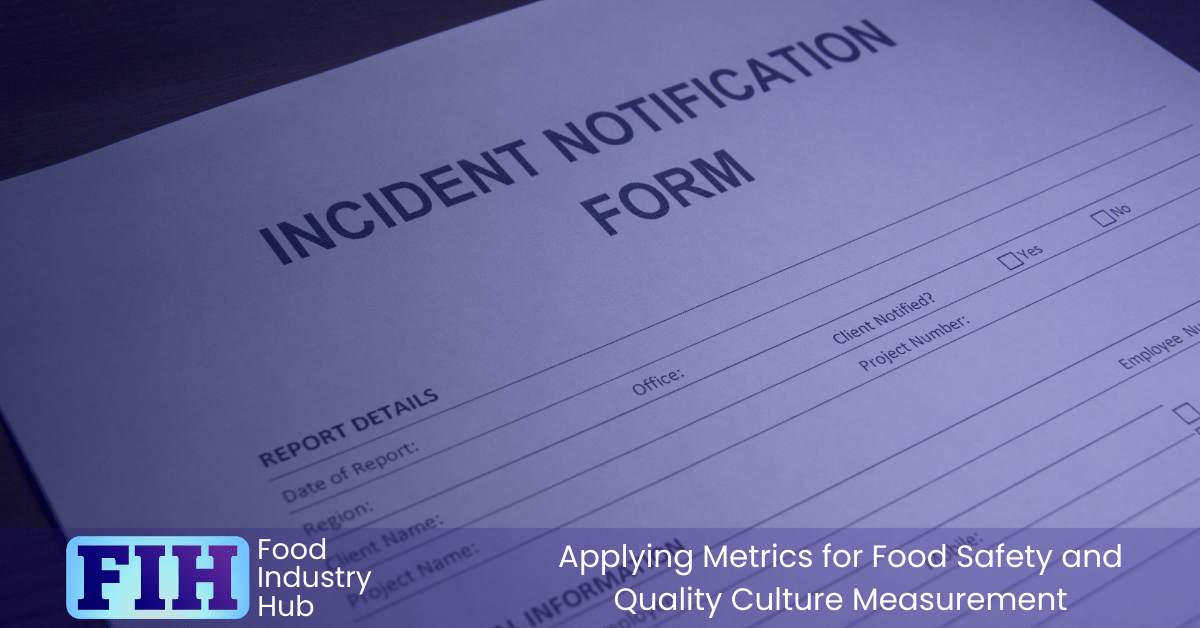
Engagement with assurance processes
Systematically, compliance with the site’s quality management system can be used as a metric applied to an organisation’s quality behaviour, just as handwashing is seen as an indicator for attitude at individual-level. Relatively high compliance would be seen as organisational quality behaviour indicating that food safety and quality is highly influential on the culture, whereas relatively high non-compliance would indicate that food safety and quality are of low importance to the organisational culture.
Of course, compliance can’t be a stand-alone KPI for food safety and quality culture. This raises the question: if an organisation had an ideal food safety and quality culture, what sort of behaviours would be expected?
The particular ways people engage with assurance processed can yield a lot of valuable information about the food safety and quality culture throughout the business. Observing how employees interact with assurance processes can provide insights into the overall mindset and commitment to food safety and quality. For instance, if employees approach assurance tasks with rigor, attention to detail, and a strong sense of responsibility, it suggests a culture that values and prioritises food safety. On the other hand, if assurance processes are seen as mere formalities or are rushed through without much care, it could indicate a lack of emphasis on quality and safety within the business. By closely monitoring and analysing these interactions, management can identify areas for improvement and implement strategies to strengthen the organisation’s food safety and quality culture.
Engagement with assurance systems can indicate how much of a priority food safety and quality is to the business and its management team. For example, if internal audits are routinely completed behind schedule, then that might indicate that quality assurance is not being prioritised.
Conversely, diligent and proactive engagement with systems like the preventative maintenance programme for equipment might indicate a strong quality commitment. By actively participating in the preventative maintenance programme for equipment, businesses demonstrate a dedication to ensuring the longevity and efficiency of their assets. This commitment not only showcases a strong quality focus but also reflects a proactive approach to minimising downtime and preventing costly breakdowns. Regular maintenance activities can help identify and address potential issues before they escalate, leading to improved reliability and ultimately, enhanced customer satisfaction. Embracing such initiatives highlights a company’s commitment to excellence and continuous improvement in delivering high-quality products and services – so there’s a clear cultural indication to be derived from engagement with preventative systems like this.
In addition to the engagement with quality assurance and compliance systems, the food safety and quality culture of a food manufacturing business can also be reflected in how employees are trained and empowered to prioritise these processes. A strong food safety and quality culture is evident when employees at all levels of the organisation are well-trained in best practices, are encouraged to speak up about potential issues, and are equipped with the tools and resources needed to consistently uphold high standards. A culture that values continuous improvement and accountability, where feedback is welcomed and acted upon promptly, demonstrates a genuine commitment to ensuring the safety and quality of products.

Evidence of Senior Management Commitment Through Quantifiable Metrics Such as Budget Allocation
When senior managers allocate appreciable budget to quality and safety activities, this shows a commitment to properly resource food safety and quality undertakings.
This level of financial commitment from senior managers not only demonstrates a dedication to food safety and quality, but it also sets a tone for the entire organisation. When significant budget is allocated to quality and safety activities, it sends a clear message to all employees that these aspects are a top priority. This can help create a culture of accountability and excellence throughout the company, leading to improved processes, products, and ultimately, customer satisfaction. By investing in quality and safety initiatives, senior managers are not only protecting their brand and reputation but also ensuring the well-being of their customers and the success of the business.
Deploying budget on food safety and quality serves to signal the value that senior managers attribute to food quality and safety. This is highly influential on – and indicative of – the food safety and quality culture.
Investing in food safety and quality not only signals the importance placed on these aspects by senior managers, but also helps to establish a strong foundation for a positive food safety and quality culture within the organisation. The act of spending money on food safety and quality initiatives effectively proves to employees that the senior management authentically values food safety and quality. By extension, budget allocation can be a strong indicator of food safety and quality culture for assessment purposes.
Using the financial investment into food safety and quality activities has the advantage of providing an objective metric. Relatively high financial investment indicates a high degree of senior management commitment and prioritisation of food safety and quality ideals. Relatively low financial investment indicates that food safety and quality is less of a priority.

In Summary
Food safety and quality can be challenging to assess objectively, but combining evaluation criteria can enable a robust and credible determination of culture maturity. The assessment of the food safety and quality culture should yield actionable outcomes to target improvement initiatives.
From The Food Industry Hub Knowledge Centre
Featured pages from The Food Industry Hub Knowledge Centre:
Further Resources
Food Industry Hub serves the food industry with a range of digital resources for the benefit of both commercial food manufacturers and food industry professionals.
For food manufacturers, we offer integrated management systems that give every user a direct interface with your QMS.
For food industry professionals, we provide an extensive signposting service in addition to informational content we hope you’ll find useful as you face new professional challenges. We have very ambitious plans to expand the range of services offered, and currently present informational content on management, safety and quality, and professional success.

